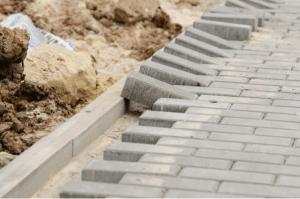Welcome to our blog post on the evolution of concrete technology and construction methods. Concrete has been an integral part of construction for centuries, and advancements in technology have revolutionized its properties and applications. In this article, we will explore the fascinating journey of concrete, from its early days to the modern innovations that shape the construction industry today. We will also delve into the evolution of construction methods, highlighting traditional techniques, industrialized approaches, and sustainable practices. Let’s embark on this informative journey together.
Evolution of Concrete Technology
Early Days of Concrete
Concrete dates back to ancient times, where early civilizations discovered its remarkable properties. The Egyptians and Romans were among the first to use rudimentary forms of concrete in their structures. However, it was not until the 19th century that significant advancements in concrete technology took place.
Reinforced Concrete
One groundbreaking development was the introduction of reinforced concrete. In the mid-19th century, engineers realized that embedding steel bars within concrete greatly enhanced its strength and load-bearing capacity. This innovation revolutionized the construction industry, allowing the creation of taller buildings and more complex structures. Reinforced concrete became the backbone of modern construction.
Modern Concrete Innovations
Fast forward to the present day, and concrete technology continues to evolve. Engineers and scientists are constantly exploring new ways to improve its durability, sustainability, and performance. Some notable innovations include:
- High-Performance Concrete (HPC): HPC incorporates advanced materials and admixtures to enhance strength, durability, and resistance to environmental factors. It finds applications in high-rise buildings, bridges, and infrastructure projects.
- Self-Healing Concrete: This remarkable technology enables concrete to repair its own cracks. Microorganisms or capsules containing healing agents are embedded within the concrete mixture. When cracks occur, these agents are activated, filling the gaps and restoring the structure’s integrity.
- 3D-Printed Concrete: Additive manufacturing techniques have paved the way for 3D-printed concrete structures. This method allows for intricate designs, reduced material waste, and faster construction times.
Evolution of Construction Methods
Traditional Construction Techniques
Before the advent of modern machinery, construction relied heavily on manual labor and traditional techniques. Craftsmen would painstakingly construct buildings using simple tools and methods passed down through generations. These techniques varied across regions and cultures, showcasing the rich diversity of architectural styles.
Industrialized Construction
With the Industrial Revolution came a significant shift in construction methods. The introduction of machinery and mass production techniques revolutionized the speed and efficiency of building processes. Prefabrication became popular, allowing components to be manufactured off-site and assembled on-site, reducing construction time and costs.
Sustainable Construction Practices
In recent years, the construction industry has embraced sustainability as a key principle. Various methods have emerged to reduce environmental impact and promote resource efficiency. Some sustainable construction practices relevant to concrete include:
- Recycled Aggregates: Incorporating recycled materials, such as crushed concrete or reclaimed aggregates, reduces the demand for virgin resources and minimizes waste.
- Energy-Efficient Concrete: Advances in concrete technology have led to the development of energy-efficient variants. These concretes require less energy during production and have lower carbon footprints.
- Green Roofs: Concrete structures can be designed to support green roofs, which provide insulation, reduce stormwater runoff, and contribute to urban biodiversity.
Frequently Asked Questions
1. What are the advantages of using reinforced concrete?
Reinforced concrete offers several advantages, including exceptional strength, versatility, and durability. Its ability to withstand heavy loads and resist fire makes it a preferred choice for bridges, high-rise buildings, and infrastructure projects.
2. How has technology improved concrete construction?
Technology has revolutionized concrete construction in various ways. Advanced materials, such as high-performance concrete and self-healing concrete, have enhanced its properties. Additionally, innovative construction techniques, such as 3D printing, have streamlined the building process, reducing time and costs.
3. What are some sustainable construction methods for concrete?
Sustainable construction methods for concrete include the use of recycled aggregates, energy-efficient concrete production, and incorporating green roofs into building designs. These practices promote environmental responsibility and reduce the carbon footprint of construction projects.
4. How does Utah Concrete Lifting utilize advanced technology?
At Utah Concrete Lifting, we embrace cutting-edge technology to deliver superior concrete lifting and leveling solutions. We utilize state-of-the-art equipment and techniques, such as polyurethane foam injection, to repair and restore sunken or uneven concrete surfaces. Our innovative approach ensures long-lasting results and minimizes disruption to your property.
5. What sets Utah Concrete Lifting apart from other concrete contractors?
At Utah Concrete Lifting, our commitment to excellence sets us apart. We combine years of experience with the latest industry knowledge to provide exceptional customer service and top-quality concrete solutions. Our team of skilled professionals is dedicated to delivering reliable, efficient, and cost-effective results for all your concrete needs.
Conclusion
In conclusion, the evolution of concrete technology and construction methods has shaped the modern world we live in. From the early days of basic concrete to the revolutionary advancements of reinforced concrete and modern innovations, this versatile material continues to play a vital role in construction. Additionally, the evolution of construction methods, from traditional techniques to industrialized approaches and sustainable practices, highlights the industry’s constant pursuit of efficiency and environmental responsibility.
If you’re in need of reliable and efficient concrete lifting and leveling services, look no further than Utah Concrete Lifting. Our team of experts is ready to assist you in restoring the beauty and functionality of your concrete surfaces. Contact us today at 801-396-0391 or visit our website to request a service and experience the Utah Concrete Lifting difference.



